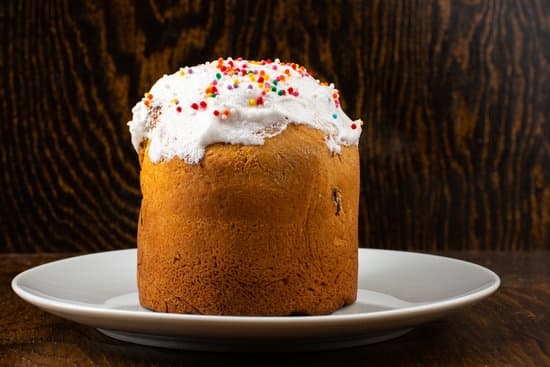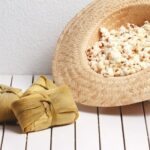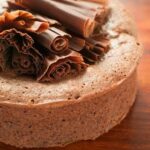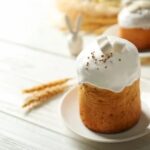Are you looking to enhance your cake decorating skills? Learning how to practice cake decorating is essential in mastering this artistic craft. Whether you are a beginner looking to improve your techniques or an experienced decorator hoping to take your skills to the next level, consistent practice is key to success.
Practice not only helps refine your skills but also allows you to experiment with different techniques and designs. The more you practice, the more confident and proficient you will become in creating beautifully decorated cakes that are sure to impress. With dedication and perseverance, even the most challenging decorating techniques can be mastered through regular practice.
In this article, we will explore the importance of practice in cake decorating, providing valuable tips and insights on setting up your workspace, selecting the right tools and materials, mastering basic techniques, troubleshooting common mistakes, and advancing your skills with more intricate designs. Whether you’re a novice or an expert in cake decorating, committing yourself to regular practice will undoubtedly elevate your abilities and help you achieve stunning results in your creations.
Setting Up Your Cake Decorating Workstation
Setting up a dedicated workstation for cake decorating is essential to ensure efficiency and creativity in your practice sessions. Here are some key steps to consider when setting up your cake decorating area:
- Choose a well-lit and spacious area in your kitchen or a designated corner where you can work comfortably.
- Invest in a sturdy and level work surface, such as a kitchen island or table, where you can place your cakes for decorating.
- Organize your tools and materials within arm’s reach by setting up a caddy, turntable, or storage containers to keep everything easily accessible.
Having the right tools and materials at hand is crucial for successful cake decorating practice sessions. Here are some essential items that you should have in your workstation:
- Turntable: A revolving stand that allows you to easily rotate the cake while decorating.
- Piping bags and tips: Essential for creating different designs with buttercream or royal icing.
- Offset spatula: Used for spreading frosting smoothly on cakes and creating decorative patterns.
Now that your workstation is set up with all the necessary tools and materials, it’s time to start practicing. In this section, we will guide you through basic techniques that beginners can master before moving on to more advanced designs. Practice makes perfect when it comes to cake decorating, so don’t be afraid to experiment and try new things in order to improve your skills.
Remember, patience and perseverance are key when learning how to practice cake decorating. Enjoy the process of creating beautiful and delicious desserts that will delight not only yourself but also those lucky enough to enjoy your creations. Whether you’re a beginner or an experienced decorator, there’s always room for growth and improvement in the world of cake decorating.
Essential Tools and Materials for Practice
Practicing cake decorating requires the right tools and materials to ensure that your creations come out beautifully. Here are some essential items you will need to have in your cake decorating workstation:
- Piping bags: These are essential for adding details and designs to your cakes. Make sure to have a variety of piping tips to create different shapes and textures.
- Spatulas: Both offset and straight spatulas are necessary for smoothing frosting and filling layers in between cakes.
- Turntable: A turntable makes it easier to decorate all sides of the cake without having to constantly move the cake around.
- Bench scraper: This tool is great for achieving smooth edges on your cakes and cleaning up any excess frosting.
- Fondant tools: If you plan on working with fondant, invest in tools such as a fondant smoother, rolling pin, and various cutters for intricate designs.
In addition to these tools, it’s important to have the right materials on hand for practicing cake decorating:
- Cake boards and boxes: You’ll need a sturdy base for your cakes as well as boxes for transportation if needed.
- Frosting or buttercream: Have enough frosting on hand for practicing different techniques and designs.
- Fondant or gum paste: If you want to work with fondant or gum paste decorations, make sure to have these materials ready for use.
- Food coloring: Invest in gel food colors as they provide vibrant hues without watering down your icing.
Now that you have the necessary tools and materials, you can start practicing your cake decorating skills. Experiment with different techniques and designs to see what works best for you. Remember, practice makes perfect, so don’t be discouraged if your first few attempts aren’t flawless. With time and dedication, you’ll see improvement in how to practice cake decorating.
Basic Techniques for Beginners to Master
When it comes to cake decorating, mastering basic techniques is essential for beginners looking to improve their skills. Whether you are just starting out or looking to brush up on your skills, practicing these fundamental techniques will set a strong foundation for more advanced designs in the future.
Crumb Coating
Before diving into intricate designs, beginners should first master the art of crumb coating. This technique involves applying a thin layer of frosting to seal in any crumbs on the cake before adding the final layer of icing. By perfecting this step, you can ensure a smooth and professional-looking finish for your cakes.
Piping Techniques
Learning proper piping techniques is another key skill for beginners to focus on. Practice with different piping tips and icing consistencies to create various designs such as rosettes, shells, and borders. By mastering piping techniques, you can add decorative elements and personalized touches to your cakes.
Fondant Application
Working with fondant is a common practice in cake decorating, and beginners should become familiar with rolling out fondant, covering cakes smoothly, and creating basic shapes and decorations. Practice sculpting figures or flowers with fondant to enhance your cake designs and bring your creations to life.
Overall, consistent practice is key when it comes to mastering basic cake decorating techniques. Experiment with different tools, materials, and designs to develop your skills and creativity in the world of cake decoration. By dedicating time and effort into practicing these fundamental techniques, you’ll be well on your way to creating stunning cakes that impress both friends and clients alike.
Step-by-Step Guide to Practice Cake Decorating
When it comes to mastering the art of cake decorating, practice is key. The more you practice, the more confident and skilled you will become in creating stunning designs on your cakes. But practicing cake decorating can be intimidating for beginners who are just starting out. However, with the right tools, materials, and techniques, anyone can hone their skills and create beautiful works of edible art.
To start practicing cake decorating, it is important to set up a dedicated workstation where you can work comfortably and efficiently. Make sure you have enough space to work and organize all your tools and materials within reach. Keep your workstation clean and tidy to avoid any unnecessary distractions or accidents while working on your cakes.
Now that you have your workstation set up, it’s time to gather essential tools and materials for practicing cake decorating. Some basic supplies you will need include a turntable, offset spatula, piping bags, tips, food coloring gels, fondant smoother, and various decorating tools.
Investing in quality tools will not only make your practice sessions more enjoyable but will also help you achieve professional-looking results in your cake designs. Experiment with different tools and techniques to discover what works best for you as you continue to practice cake decorating.
Troubleshooting Common Mistakes in Cake Decorating
Cake decorating can be a fun and rewarding hobby, but it is not without its challenges. As a beginner, it’s common to make mistakes along the way. One of the most common issues that beginners face is getting the right consistency for their icing.
If your icing is too thin, it will not hold its shape on the cake. On the other hand, if it’s too thick, it will be difficult to pipe and may result in uneven decorations. To troubleshoot this issue, make sure to follow the recipe instructions carefully and adjust the consistency by adding more powdered sugar or liquid as needed.
Another common mistake in cake decorating is air bubbles forming in your icing while piping. These air bubbles can cause uneven lines or holes in your decorations. To prevent this issue, make sure to remove any air bubbles by gently tapping the piping bag on a flat surface before piping. You can also try using a toothpick to release any trapped air inside the icing as you pipe.
Additionally, some beginners may struggle with achieving smooth surfaces on their cakes due to crumbs mixing with the icing during decoration. This can result in a messy and unprofessional finish. To avoid this problem, consider crumb coating your cake before applying final decorations. A crumb coat is a thin layer of icing that locks in any loose crumbs and provides a smooth base for your final decorations.
| Cake Decorating Mistakes | Troubleshooting Tips |
|---|---|
| Incorrect Icing Consistency | Adjust consistency by adding more powdered sugar or liquid |
| Air Bubbles in Icing | Remove air bubbles by tapping piping bag or using toothpick |
| Crumbs Mixing with Icing | Crumb coat cake before final decoration for smooth surface |
Tips for Improving Your Cake Decorating Skills
When it comes to improving your cake decorating skills, practice truly makes perfect. As with any skill, the more you practice, the better you will become at cake decorating. But simply practicing without a plan or direction may not yield the desired results. Here are some tips to help you effectively improve your cake decorating skills.
Experiment With Different Techniques
One of the best ways to enhance your cake decorating abilities is to try out different techniques. This could include piping with various types of tips, working with fondant, experimenting with different textures and designs, or even trying out new coloring techniques. By stepping out of your comfort zone and exploring different methods, you’ll not only expand your skill set but also discover what works best for you.
Attend Workshops or Classes
If you’re looking to take your cake decorating skills to the next level, consider attending workshops or classes led by experienced cake decorators. These sessions can provide valuable insights, tips, and tricks that you may not learn on your own. Additionally, interacting with fellow enthusiasts can inspire you and offer a supportive community of like-minded individuals who share your passion for cake decorating.
Seek Feedback and Learn From Mistakes
Constructive feedback is invaluable when it comes to improving any skill, including cake decorating. Don’t be afraid to share your creations with friends, family, or online communities for feedback. Embrace mistakes as learning opportunities rather than setbacks. Analyze where things went wrong and figure out how you can improve in the future. By learning from both successes and failures, you’ll continuously grow as a cake decorator.
By incorporating these tips into how to practice cake decorating, you’ll gradually see improvement in your skills and creativity. Remember that progress takes time and patience, so don’t get discouraged if things don’t turn out perfectly right away. With dedication and a willingness to learn from every experience, you’ll soon find yourself creating beautifully decorated cakes that bring joy to others.
Inspiration for Advanced Cake Decorating Designs
Are you ready to take your cake decorating skills to the next level and create some truly stunning designs? Look no further for inspiration for advanced cake decorating designs that will impress all of your friends and family. Once you have mastered the basic techniques and feel confident in your abilities, it’s time to get creative and push yourself to try new and challenging designs.
One way to find inspiration for advanced cake decorating designs is to look at professional cake decorators’ work. Browse through social media platforms like Instagram or Pinterest, where talented bakers share their intricate creations. Take note of different techniques, color combinations, and design elements that catch your eye. Don’t be afraid to experiment and put your own spin on these ideas to create unique masterpieces.
Another great source of inspiration is nature. Look at the beauty around you – from vibrant flowers to delicate patterns on butterflies – and think about how you can translate these natural elements into your cake designs. You can also draw inspiration from art, fashion, architecture, or even pop culture. The possibilities are endless when it comes to creating innovative and visually appealing cake decorations. Remember, practicing new techniques regularly is key to developing your skills and expanding your creative repertoire.
Taking Your Skills to the Next Level
As you progress in your cake decorating journey, it is important to continually challenge yourself and refine your skills. Advanced practice techniques are essential in pushing the boundaries of your creativity and honing your craft. By incorporating more intricate designs, experimenting with different textures, and exploring new decorating methods, you can elevate your cakes to a whole new level.
One way to take your skills to the next level is by mastering advanced piping techniques such as stringwork, lace work, and intricate borders. These techniques require precision and patience but can add a stunning level of detail to your cakes. By practicing these techniques regularly, you will gradually improve your piping skills and be able to create more elaborate designs.
Another way to advance your cake decorating skills is by exploring sculpting and modeling techniques. From creating realistic flowers and figures to shaping intricate patterns and textures, sculpting allows you to add dimension and character to your cakes. By experimenting with different mediums like fondant, gum paste, or modeling chocolate, you can bring unique elements to your designs that will set them apart from the rest.
In conclusion, taking your cake decorating skills to the next level involves dedication, practice, and a willingness to push past your comfort zone. By continuously challenging yourself with new techniques, designs, and materials, you will see significant growth in your abilities as a decorator. Remember that practice is key in improving any skillset, so don’t be afraid to experiment and make mistakes along the way. With time and perseverance, you will become a master at cake decorating.
Frequently Asked Questions
What Can I Use to Practice Cake Decorating?
To practice cake decorating, you can use dummy cakes made of Styrofoam or cardboard. These fake cakes allow you to practice frosting techniques, piping designs, and other decorating skills without wasting actual cake. Additionally, you can practice on parchment paper or wax paper to perfect your piping skills before moving on to real cakes.
How Can I Practice Cake Decorating Without Wasting Cake?
If you want to practice cake decorating without wasting cake, consider using a dummy cake or practicing on parchment paper. You can also use buttercream or royal icing to decorate cookies or cupcakes instead of full-size cakes.
Another option is to make smaller cakes or cupcakes specifically for practice and share them with friends and family so they don’t go to waste.
How Do I Get Good at Decorating Cakes?
To get good at decorating cakes, consistent practice is key. Start by mastering basic techniques like smoothing frosting, piping borders, and creating simple designs. Watch tutorials online, take a class, or read books on cake decorating for inspiration and tips.
Experiment with different tools and techniques to find what works best for you. Finally, don’t be afraid to make mistakes – learning from them will help you improve your skills over time.

Welcome to our cake decorating blog! My name is Destiny Flores, and I am the proud owner of a cake decorating business named Cake Karma. Our mission is to provide delicious, beautiful cakes for all occasions. We specialize in creating custom cakes that are tailored specifically to each customer’s individual needs and tastes.





